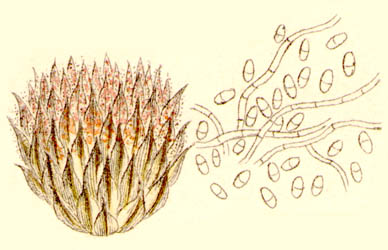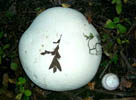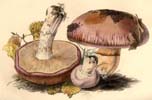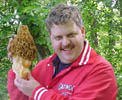(pl. septa)
Terms discussed: adventitious septum (pl. adventitious septa), aseptate, coenocytic, nonseptate, septate
See Also:
adventitious

A fungal cell wall that cuts across the hypha (or spore), dividing it into cells, is called the septum. Such a spore or hypha, as in the picture, is called septate. The spores in the image are called 2-septate, because they are divided into two cells.
Back to top
A mycelium where the hyphae lack septa is called aseptate or coenocytic. Often, coenocytic mycelia concentrate their protoplasm in the actively growing tip of the hyphae, leaving the center of the mycelium almost empty of protoplasm. In this case, the concentrated protoplasm often forms a septum behind itself, to keep it from flowing back into the deserted center. This type of septum is called an adventitious septum. In a wider sense, an adventitious septum is any septum that is not formed during as part of everyday mitosis - - the other most common example is when a phragmobasidium divides itself into separate cells after meiosis.
Back to top












